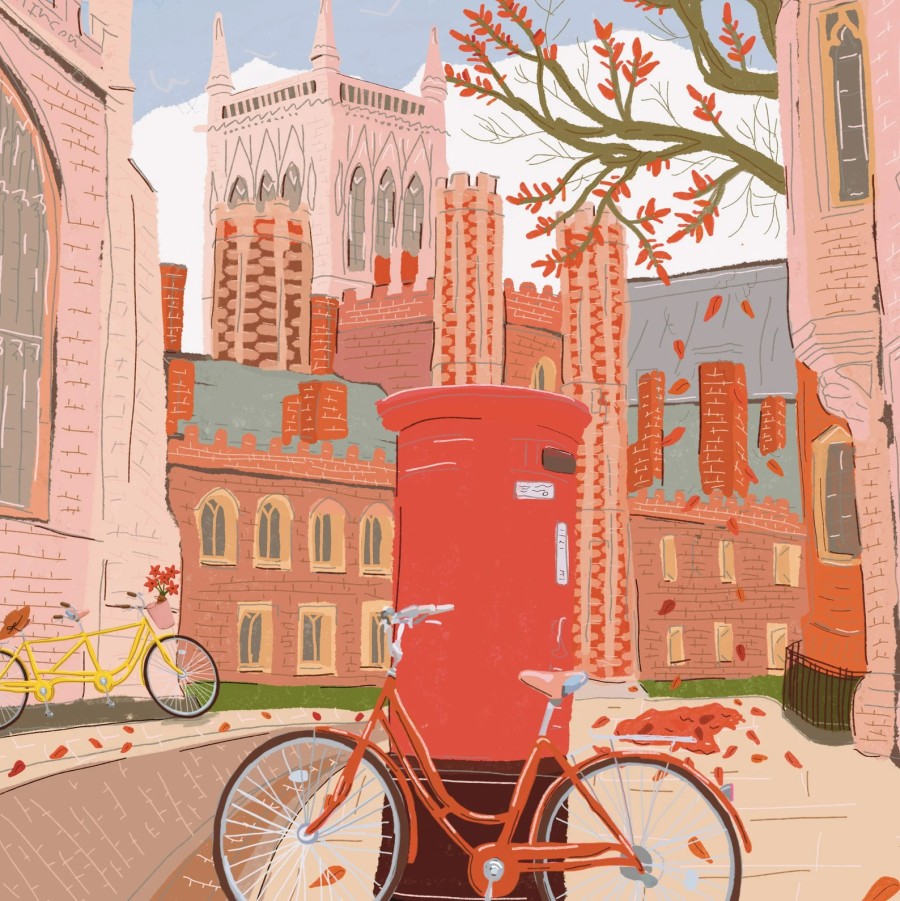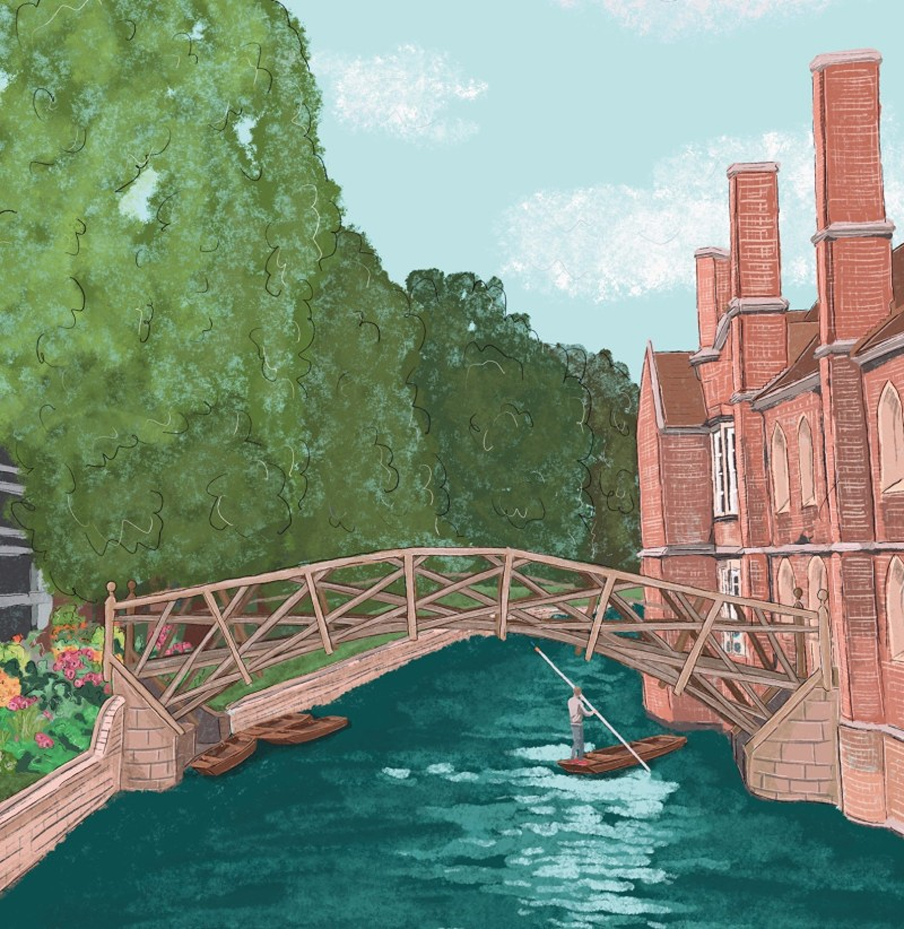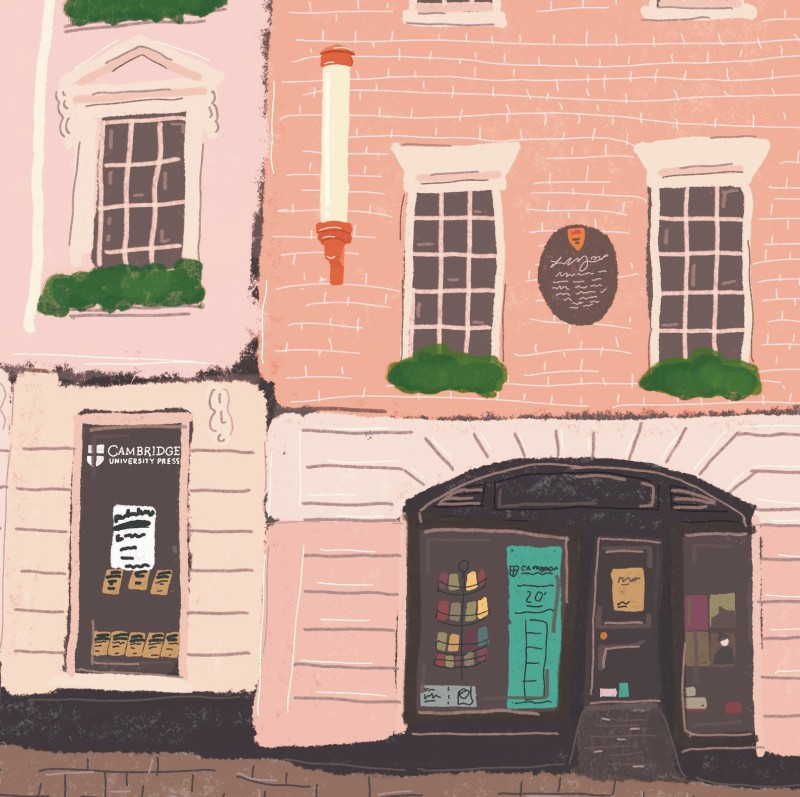Cambridgeshire: The Fens, Cambridge, Ely, Grantchester

Cambridgeshire is a charming historic county, home to the famed university, but also to Ely Cathedral and The Fens (low-lying wetlands that are home to most of England’s organic food).
The city of Cambridge is on the River Cam, known for many beautiful bridges. This is England’s version of Venice!
Always follow the Countryside Code, to keep all creatures safe.
Core Colleges and Their Charms
Cambridge isn’t just one big campus. It’s a collection of 31 colleges, each with its own identity and quirks. Some colleges are grand and famous, while others are cosy and hidden behind old walls. Four standout colleges often catch the spotlight:
- King’s College: Famous for its beautiful Chapel, King’s stuns visitors with soaring stonework and stained glass. The college lawn rolls right down to the river’s edge. Each Christmas, millions tune in to watch the King’s College Choir, filling the Chapel with soaring voices.
- Pembroke College: Opened in 1347, Pembroke’s medieval courts blend into lush gardens. You’ll find the city’s oldest working Chapel here. The college looks pretty traditional, but it’s known for welcoming students from all walks of life.
- St John’s College: The Bridge of Sighs (don’t confuse it with the Venetian one) links old college buildings over the cam. The college spans both sides of the river, showing off its mix of Tudor brickwork and Victorian touches.
- Trinity College: With its huge courtyards and grand gates, Trinity can feel like its own small town. Isaac Newton studied here, and the college library holds treasures ranging from Newton’s personal notebooks to ancient manuscripts.
Cambridge graduates have made marks on every corner of culture. Their stories show what’s possible when talent meets a place that values curiosity and debate. A quick look at the alumni roll call reads like a who’s who:
- Scientists: Sir Isaac Newton (physics), Rosalind Franklin (DNA research), Stephen Hawking (cosmology).
- Writers and Poets: Sylvia Plath, E.M. Forster, A.A. Milne (the creator of Winnie the Pooh).
- Musicians: Pink Floyd founders Syd Barrett and Roger Waters, both began their music journeys at Cambridge.
- Actors and Comedians: Emma Thompson and John Cleese, of Monty Python fame, both polished their sketches at the Footlights theatre group.
Famous Punting Spots

Some stretches of the Cam create postcard-perfect glimpses of Cambridge. The most popular route, called “the Backs,” glides you under arched bridges and past green lawns owned by the city’s oldest colleges. Rowers and punters share the water, weaving around each other with mixed skill and patience.

King’s College Chapel is the showstopper most visitors expect when they picture Cambridge. Its late Gothic design is jaw-dropping from any angle. Look up, and you’ll see a fan-vaulted ceiling that seems to float above the stone. Sunlight filters through huge stained glass windows that tell stories in every square inch. Against the green of the college lawns and the backdrop of the river, the building feels timeless.
Inside, music brings the space alive. The King’s College Choir, made up of young choristers and students, fills the chapel with clear, perfect voices. Their evensong draws both locals and those simply wanting to lose themselves in the sound. At Christmas, millions tune in to the “Festival of Nine Lessons and Carols,” broadcast from this very spot.
Visitors line up year-round to tour the Chapel, not just for the architecture but for the feeling of standing in a place that has seen centuries come and go. Few places in Cambridge mix grand beauty and living tradition as well as King’s College Chapel.
The Mathematical Bridge: A Woodwork Wonder
The Mathematical Bridge, near Queens’ College, might get fewer leaflets than King’s, but its story travels far and wide. On first glance, it looks simple—a wooden bridge arched over the Cam, built with no obvious support in the middle. The trick lies in the clever geometry. Hidden triangles give the bridge its strength, making it easy on the eyes and solid underfoot.
A favourite local myth claims Isaac Newton designed it with no bolts, just maths and wood, and that students later took it apart and couldn’t put it back together. The real story is tamer, but the myth sticks. Newton died before the bridge was built, and iron bolts have always held it firm. Still, the rumour adds a touch of mystery to an already smart design.
People visit for the engineering, for the photos, and for the fun of seeing how a simple wooden bridge can spark this much curiosity.

Cambridge Folk Festival Overview
Every summer, the Cambridge Folk Festival turns Cherry Hinton Hall into a bright, bustling hive of music fans. It started in 1965 as a modest folk gathering and quickly grew into one of England’s longest-running folk music events. The festival sticks to its roots but always pushes beyond, booking a mix of folk legends, global artists, and new voices.
Saint Etheldreda: Ely’s Legendary Founder

The roots of Ely’s story begin with Saint Etheldreda (often called Audrey), a 7th-century princess who gave up royal comfort for a life of faith. She founded a monastery on what would become the site of Ely Cathedral. In a time when women were rarely seen as leaders, Etheldreda built not only a religious home but a foundation for the entire city.
Kings, Power, and Influence: King Edgar the Peaceful
Ely’s past is also tied to England’s kings. One of the most memorable, King Edgar the Peaceful, ruled in the 10th century and played a part in Ely’s growth. Edgar wanted to honour Etheldreda’s memory, so he gave land and money to help rebuild her abbey after years of trouble.
This royal support turned Ely into a centre of power and faith. With wealth and status came new buildings and greater influence, setting the stage for the majestic cathedral that stands today.
Working-Class Roots: The Ely and Littleport Riots
Not all of Ely’s history comes from royalty and saints. The working people have shaped its story as much as any king or church leader. The Ely and Littleport Riots in 1816 show this side clearly.
The riots in 1816 were due to unemployment, falling wages and high food prices, mostly of train. While people were living on little more than gruel and water, the Prince Regent (George IV) was spending money lavishly, on multi-course meals and redecorating Brighton Pavilion that cost hundreds of thousands of pounds.
Things turned ugly with rioters even ransacking homes of innocent farmers, and magistrates promised a cap on the price of wheat, if things turned down. However, some riots continued, and some of the rioters were publicly hanged, and buried in an unmarked grave in Ely.
The king’s greedy behaviour (which had caused the anger in the first place) was known for his selfish lavish lifestyle, named by English Heritage as ‘Britain’s most useless monarch’, due to his indulgence. He amassed massive debts at the public’s expense, including remodelling Buckingham Palace and rebuilding Windsor Castle.
He also had many mistresses, and fathered several children outside his marriage. Nevertheless, despite always preferring ‘a girl and a bottle to politics and a sermon’, as he was dying, he repented his ways, and became very devout, asking his subjects for forgiveness, on wasting his good fortune and talent.
The Legacy of Simon MacCorkindale
Simon MacCorkindale was a local boy, who ended up as one of England’s most successful actors, known for his role in the film Death on the Nile.
He died very young (just 58) from bowel cancer, and his widow Susan George founded Lasting Life, a small charity that gives grants to help cancer patients, from forest days out to quiet rooms in hospitals.
The Fens: Wide Skies and Wetlands

Cambridgeshire is home to The Fens, unique low-lying wetlands covering 600 square miles, that offer habitats for wading birds, otters, amphibians and rare plants. Rare birds like bitterns, marsh harriers, and bearded tits thrive in the reedbeds. Otters and water voles slip along quiet backwaters.
Once providing barley and wheat for people (and lush grasses for cattle and sheep), today it’s a fertile agricultural hub, where the drained arable land now provides most of England’s organic food. Cambridge Organic sells local veg boxes.
The Cambridgeshire fens are some of the flattest lands in England. Fields stretch for miles with barely a hill in sight. The horizon here runs straight and clear, giving sunrises and sunsets a bold, open feel.
This flatness came after centuries of drainage, when marshes were turned into farmland. Water channels cut through the landscape, keeping it dry and fertile.
Thick layers of peat cover much of the fenland. These soils are dark and rich, perfect for growing crops but also a record of the area’s deep past.
How to Protect The Fens
- Never drop litter (take it home with you).
- Don’t disturb birds or wildlife
- Support local organic veg boxes (where food is grown here).
- Choose peat-free compost (keep fresh compost away from pets as it contains mould – read more on pet-friendly gardens).
Ely: Soaring Cathedral and Riverside Calm
Ely’s charm centres on its massive Norman cathedral, known as the ‘Ship of the Fens’. The intricate stonework, stained glass, and unique octagon tower draw visitors from all over the world. Take a gentle stroll along Ely’s riverside, spot narrowboats, and stop in a cosy café.
Indie Cambridge (supporting independent shops)
Indie Cambridge is a wonderful organisation, set up by locals. You can find recommended independent business and shops on the site, or subscribe to a regular magazine, also collected from shops (over 5000 copies distributed for free).
The directory is now in app form, for techy people!
Cambridge: An Ancient University City

Cambridge is a city steeped in historic architecture (the university alone boasts a college dating from 1209, a Gothic chapel in King’s College and the enchanting Bridge of Sighs at St John’s College.
Around half of the residents here ride a bicycle, at least once a week (not just students with capes!) Cambridge University (the second oldest on earth) is home to 31 colleges. The 33 acres of land at Jesus College is home to water voles, muntjac deer and sparrowhawks.

Queens’ College is home to the Mathematical Bridge, an amazing piece of engineering in that it’s curved (yet built from straight planks of wood!)
Past graduates are Bill Oddie, Sir David Attenborough, Alan Turing (the Enigma codebreaker who saved millions of lives by shortening the Second World War) and A A Milne (who wrote Winnie-the-Pooh).
The annual boat race with Oxford has been held since 1856 (bar the two World Wars). It covers a 4.2 mile section on the River Thames (in 1912, both boats sank as they filled with water during poor weather).
Grantchester: Pastoral Charm Close to Cambridge
Nestled just outside Cambridge, Grantchester has a sleepy, timeless quality. Ancient willow trees lean over lazy bends of the River Cam, while grassy paths lead walkers to secret picnic spots and sweeping views. The village’s pubs have served poets, academics, and curious visitors alike.
Grantchester’s setting inspired Rupert Brooke and other writers. The mix of gentle countryside and lively conversation still draws people back, summer after summer.






